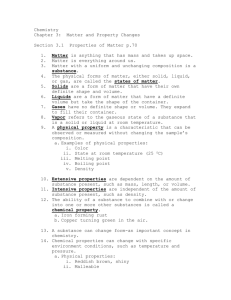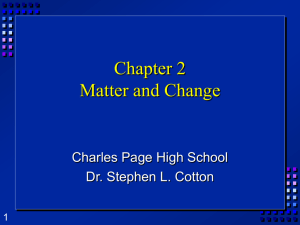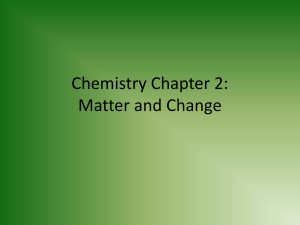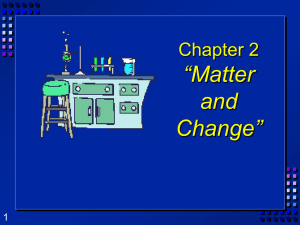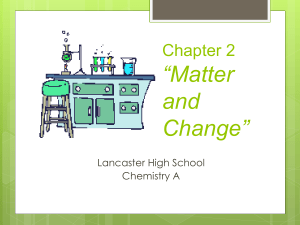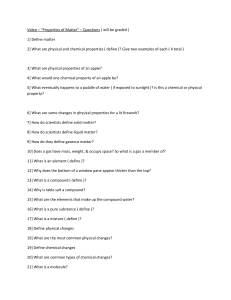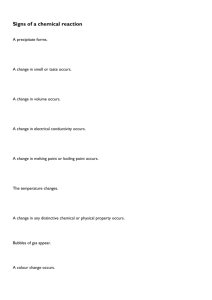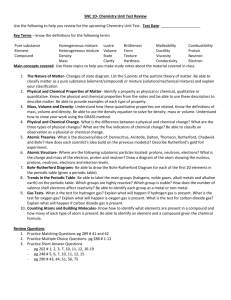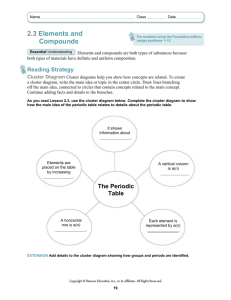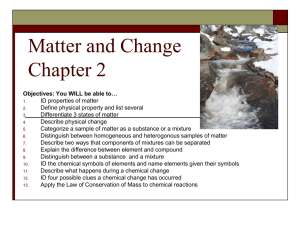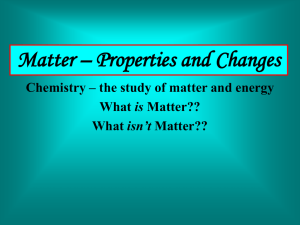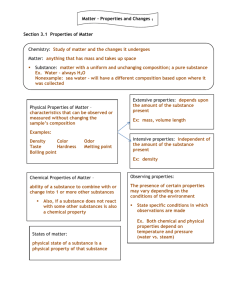Chemistry Notes–Ch. 1.
advertisement
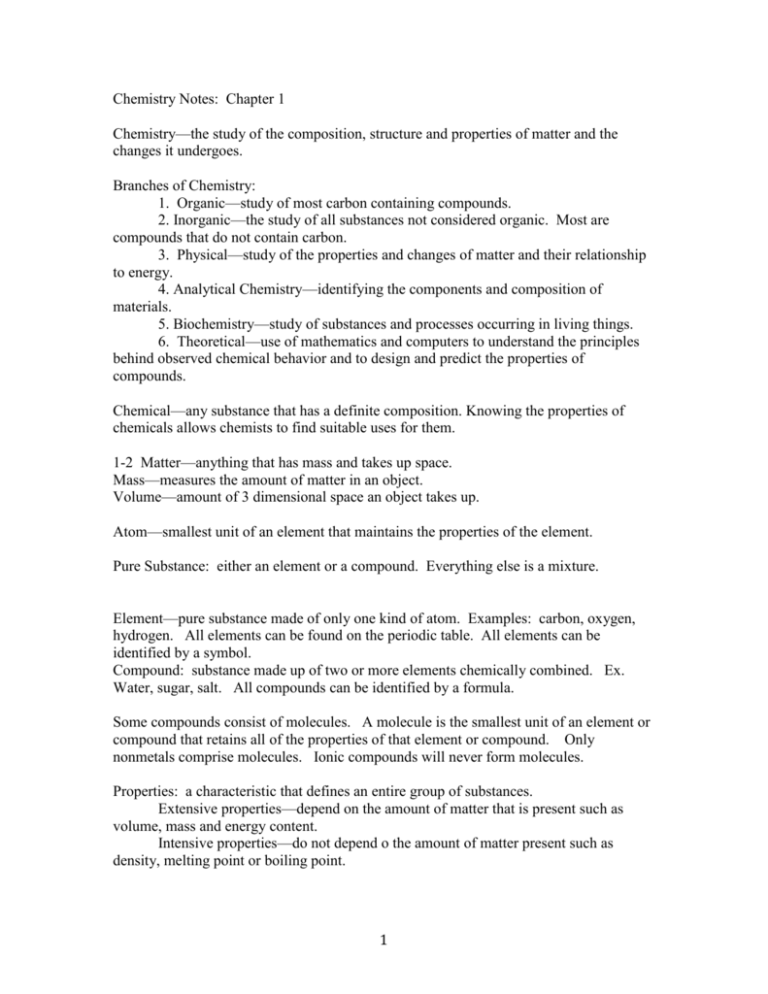
Chemistry Notes: Chapter 1 Chemistry—the study of the composition, structure and properties of matter and the changes it undergoes. Branches of Chemistry: 1. Organic—study of most carbon containing compounds. 2. Inorganic—the study of all substances not considered organic. Most are compounds that do not contain carbon. 3. Physical—study of the properties and changes of matter and their relationship to energy. 4. Analytical Chemistry—identifying the components and composition of materials. 5. Biochemistry—study of substances and processes occurring in living things. 6. Theoretical—use of mathematics and computers to understand the principles behind observed chemical behavior and to design and predict the properties of compounds. Chemical—any substance that has a definite composition. Knowing the properties of chemicals allows chemists to find suitable uses for them. 1-2 Matter—anything that has mass and takes up space. Mass—measures the amount of matter in an object. Volume—amount of 3 dimensional space an object takes up. Atom—smallest unit of an element that maintains the properties of the element. Pure Substance: either an element or a compound. Everything else is a mixture. Element—pure substance made of only one kind of atom. Examples: carbon, oxygen, hydrogen. All elements can be found on the periodic table. All elements can be identified by a symbol. Compound: substance made up of two or more elements chemically combined. Ex. Water, sugar, salt. All compounds can be identified by a formula. Some compounds consist of molecules. A molecule is the smallest unit of an element or compound that retains all of the properties of that element or compound. Only nonmetals comprise molecules. Ionic compounds will never form molecules. Properties: a characteristic that defines an entire group of substances. Extensive properties—depend on the amount of matter that is present such as volume, mass and energy content. Intensive properties—do not depend o the amount of matter present such as density, melting point or boiling point. 1 Physical Property—characteristic that can be observed without changing the identify of the substance e such as a change of state ( melting, boiling) color, shape) Physical change—a change that does not change the identity of the substance such as boiling, melting, cutting, bending. Chemical Property—relates to a substance’s ability to undergo changes that transform it into different substances. Examples: burning, decaying, rusting. Chemical change—change in which a substance is changed into one or more different substances. Examples: burning, rusting, souring, photosynthesis. States of Matter— Solid—def. volume, def shape Liquid—definite volume, take the shape of the container and may have one free surface. Gas—no definite volume, no definite shape, cannot have a free surface. Plasma—high temperature physical state made up of charged particles resulting from the gain or loss of electrons. Law of Conservation of Energy—Energy cannot be created or destroyed. It can only change form. Endothermic—energy is gained (photosynthesis) Exothermic—energy is released (burning) Matter can be classified into two main groups: 1. Pure substances (either an element or a compound) fixed composition every sample has the same composition and characteristics 2. Mixture A blend of two or more kinds of matter, each of which retains its own identity and properties. If it isn’t an element or a compound, it is a mixture. Homogenous mixture—uniform composition with the same properties throughout. (salt water, air) Heterogenous mixture—not uniform. Does not have the same properties throughout. (vegetable soup, Dairy Queen blizzard) Filtration can be used to separate some mixtures. Also, a centrifuge can be used to separate some solid/liquid mixtures such as blood. Chromatography can be used to separate mixtures of liquids. 1-3 Periodic Table Organizes all the elements. 1. Vertical columns are groups or families. Groups number form 1-18. Each group contains elements with similar properties. 2. Horizontal rows are called periods. The properties of a period change somewhat regularly across the period starting from very active metals and ending with a noble gas. 2 3. Lanthanide series—fits in the group 6 elements 4. Actinide series—fits in with group 7 elements. They are placed below the periodic table to keep the table from becoming too wide. Types of elements— 1. Metals—elements that are good conductors of heat and electricity. a. they are ductile (can be stretched into a thin wire. b. they are malleable (can be hammered into thin sheets) c. they are good conductors of heat and electricity. d. most have a silvery or grayish white luster. e. they are located on the left side of the periodic table. f. most are solids are room temperature. 2. Nonmetals—can be gases, liquids, or solids at room temperature. a. poor conductors of heat and electricity b. they are brittle c. found on the right side of the periodic table. 3. Metalloids—elements that have some characteristics of metals and some characteristics of nonmetals. a. all of solid at room temperature b. found along the zig zag line c. many are semiconductors of electricity. 4. Noble Gases: generally very unreactive a. Located in group 18 b. all are gases at room temperature c. Neon, argon, krypton and xenon are all used in lighting. d. Helium is used in balloons. 3



